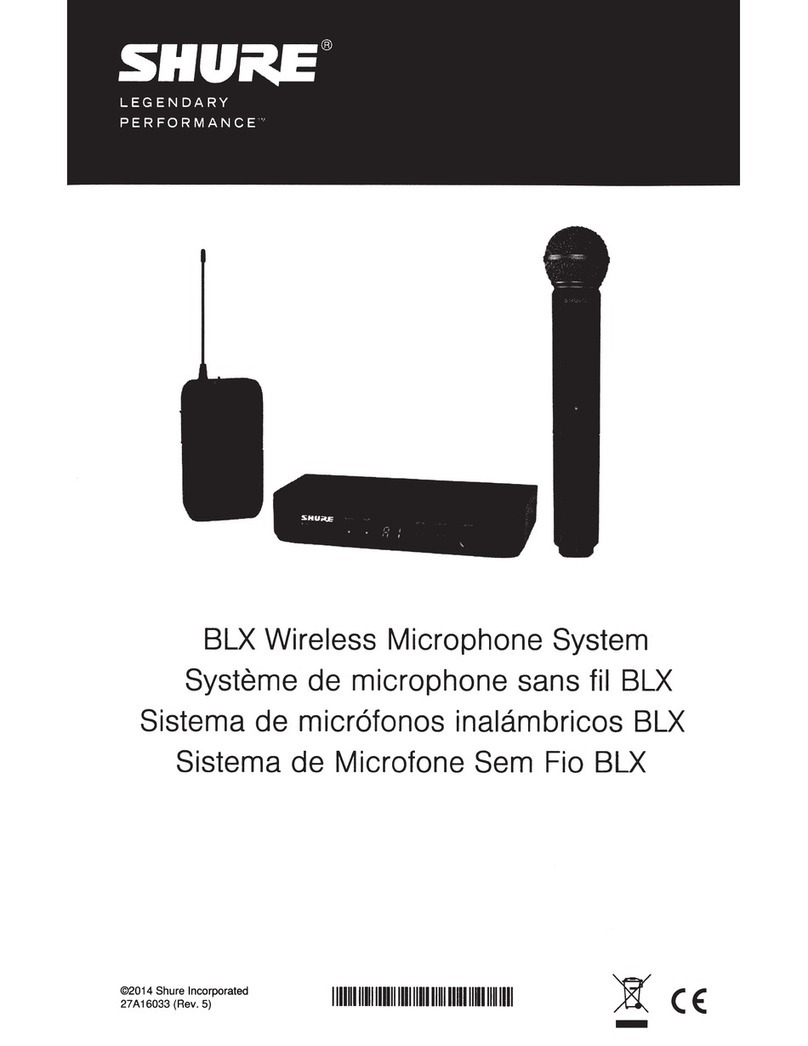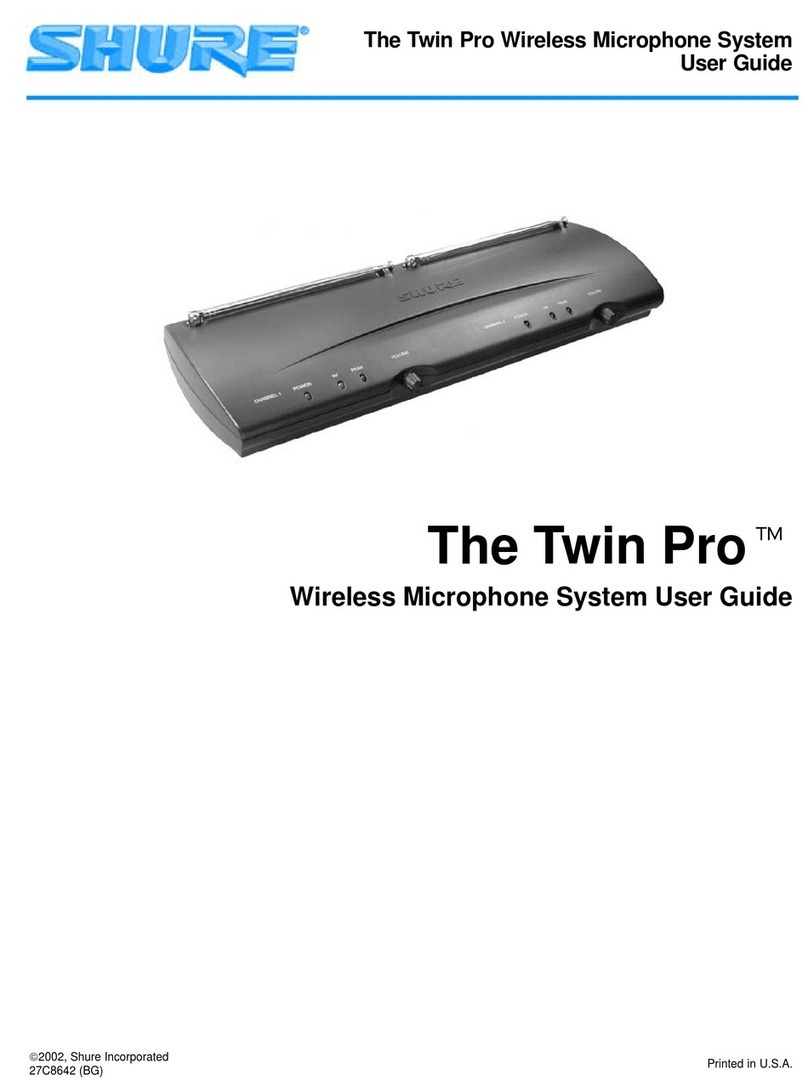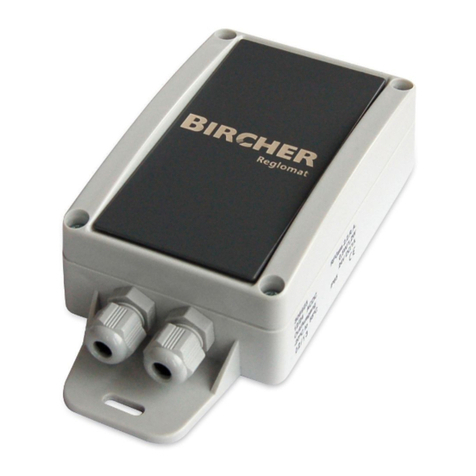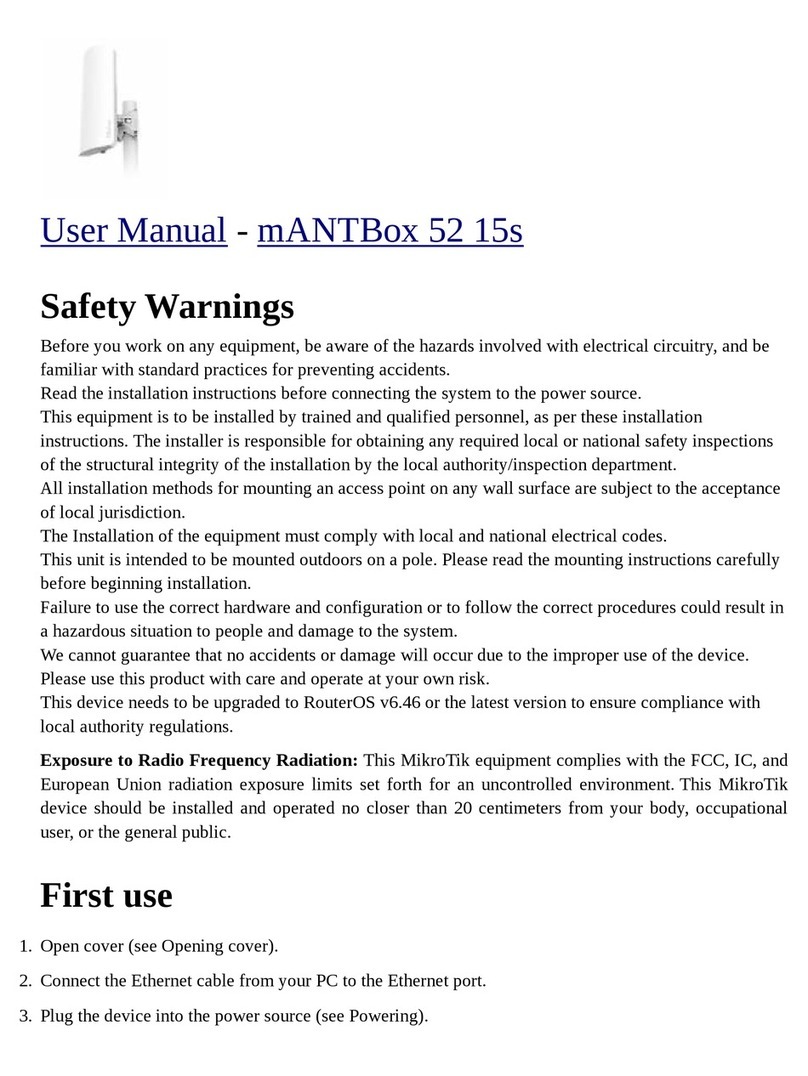Delsys Incorporated Trigno PM-W02 User manual

TrignoTM Personal Monitor User’s Guide
1
TRIGNOTM Personal Monitor
User’s Guide
PM-W02
Copyright © 2014 Delsys Incorporated
Delsys Logo and EMGworks are Regis-
tered Trademarks of Delsys Inc.
MAN-014-1-5

2
Table of Contents
Table of Contents 2
Important Information 4
Intended Use 4
Technical Service and Support 4
Warnings and Precauons 5
Device Informaon 6
Disclaimer 8
System Requirements 8
Open Source License 8
TrignoTM Personal Monitor Overview 10
1) Mobile Monitoring and Datalogging 10
2) Desktop Signal Previewing 11
System Components 12
Wireless EMG Sensor Features 13
Personal Monitor Features 14
Basic Operations 15
Charging the Trigno Sensors 15
Charging the Personal Monitor 16
Turning the Personal Monitor ON/OFF 17
User Interface and Navigaon Buons 17
Connecng the Personal Monitor to a Computer 18
Getting Started 19
Loading Protocols on the Personal Monitor 19
Data Collecon 21
Downloading Data from the Personal Monitor 23
Previewing Data Collecon Protocols 24
Advanced Features 25
Sensor Console 25
Managing Data Files (Main Menu) 25
Viewing Data Files 25
Deleng Data Files 26
Setup Opons (Main Menu) 27
Set Clock (Main Menu) 28
Log File (Main Menu) 29
View Log 29
Retrieving Log File 30
Reseng the Device 31
Inializaon 31
System Clock Reset 31
Hard Reset 31
Reformang the Data Paron 32

TrignoTM Personal Monitor User’s Guide
3
Using the Wireless EMG Sensors 33
Orienng the Sensors on the Skin 33
Cleaning the Sensors Site 33
Applying the Sensor Interface 33
Sensor Pairing 34
Sensor Factory Calibraon 35
Smart Sensors 36
Sensor Modes 36
Sensor States 36
1) Data Streaming 37
2) Receiver Scanning 37
3) Sensor Pair Complete 37
4) Sensor Pair Incomplete 37
5) Baery Charging 37
6) Charge Complete 37
7) Charge Error 37
8) Sensor O 37
Appendix I 38
Mains Isolaon 38

4
Important Information
Intended Use
e TrignoTM Wireless EMG Systems are battery-powered biofeed-
back devices that enable researchers and clinicians to acquire EMG
and related signals from subjects for biofeedback purposes. ey are
intended for relaxation training and muscle reeducation. Interpreta-
tion of the EMG and supporting signals by a qualied individual is
required.
Rx ONLY
DO NOT USE on Patients with implanted electronic devices of any
kind, including cardiac pace-makers or similar assistive devices, elec-
tronic infusion pumps, and implanted stimulators.
DO NOT USE on irritated skin or open wounds.
DO NOT USE on Patients with allergies to Silver.
Technical Service and Support
For information and assistance visit our web site at:
www.delsys.com
Contact us at:
telephone: (508) 545 8200
email: [email protected]

TrignoTM Personal Monitor User’s Guide
5
Warnings and Precautions
Consult all accompanying documents for precautionary statements
and other important information.
Consult accompanying user’s guide for detailed instructions.
Keep the device dry. e presence of liquids may compromise the
safety features of the device.
Handle with care.
Sensitive electronic device. Avoid static discharges. Do not operate
or store near strong electrostatic, electromagnetic, magnetic or ra-
dioactive elds. Interference from external sources may decrease the
signal-to-noise ratio or result in corrupted data.
Connect only to Delsys-approved devices.
Connecting a patient to high-frequency surgical equipment while
using Delsys EMG systems may result in burns at the site of the
EMG sensor contacts.
Immediately discontinue device use if skin irritation or discomfort
occurs.
Immediately discontinue device use if a change in the device’s per-
formance is noted. Contact Delsys technical support for assistance.
Please refer to Appendix I for important safety information regard-
ing Mains Isolation.
Delsys Inc. guarantees the safety, reliability, and performance of the
equipment only if assembly, modications and repairs are carried
out by authorized technicians; the electrical installation complies
with the appropriate requirements; and the equipment is used in ac-
cordance with the instructions for use.
Device contains a Lithium-Polymer battery. Do not damage, crush,
burn, freeze or otherwise mishandle the device. Recharge only with
the approved power supply and recharger.

6
Trigno Systems should be stored and operated between 5 and 40
degrees Celsius due to the presence of an internal Lithium Polymer
rechargeable cell. Storing or operating the device, and consequently
the cell, outside of this temperature range may compromise the in-
tegrity and the safety features of the cell.
Device Information
Complies with Requirements put forth by the Medical Device Di-
rective 93/42/EEC. Class I device, Annex VII.
Type BF device (IEC 60601-1).
Isolated device, (Class II, IEC 60601-1)
Do not dispose this product with house waste. Contact Delsys Inc.
for instructions on responsibly disposing this device. is product
should not be mixed with other commercial wastes.
Date of Manufacturing (appears on device)
Serial Number (appears on device)
EMERGO EUROPE
Prinsessegracht 20
2514 AP The Hague
The Netherlands
Authorized Representative Manufacturer
DELSYS INC.
23 Strathmore Rd.
Natick MA 01760
USA

TrignoTM Personal Monitor User’s Guide
7
FCC ID: W4P-SP-W03 (Trigno Body Worn Receiver)
FCC ID: W4P-SP-W01 (Trigno Sensor)
FCC ID: W4P-SP-W05 (Trigno Sensor)
IC: 8138A-DST02 (Trigno Personal Monitor System)
is device complies with Part 15 of the FCC Rules and Industry
Canada’s RSS-210 License Exempt Standards. Operation is sub-
ject to the following two conditions: (1) is device may not cause
harmful interference, and (2) this device must accept any interfer-
ence received, including interference that may cause undesired op-
eration.
is product complies with FCC OET Bulletin 65 radiation expo-
sure limits set forth for an uncontrolled environment.
Pursuant to Part 15.21 of the FCC Rules, any changes or modica-
tions to this product not expressly approved by Delsys Inc. might
cause harmful interference and void the FCC authorization to op-
erate this product.
To reduce potential radio interference to other users, the antenna
type and its gain should be so chosen that the equivalent isotropi-
cally radiated power (EIRP) is not more than that required for suc-
cessful communication.
is equipment has been tested and found to comply with the limits
for a Class B digital device, pursuant to Part 15 of the FCC Rules.
ese limits are designed to provide reasonable protection against
harmful interference in a residential installation. is equipment
generates, uses, and can radiate radio frequency energy and, if not
installed and used in accordance with the instructions, may cause
harmful interference to radio communications. ere is no guaran-
tee that interference,will not occur in a particular installation. If this
equipment does cause harmful interference to radio or television
reception, which can be determined by turning the equipment o
and on, the user is encouraged to try to correct the interference by
one or more of the following measures:
• Reorient or relocate the receiving antenna.
• Increase the separation between the equipment and receiver.
• Connect the equipment into outlet on a separate circuit.

8
Disclaimer
DELSYS INC. makes no warranties, express or implied, as to the
quality and performance of this product including but not limited
to, any implied warranty of applicability for other than research
uses by qualied individuals. DELSYS INC. shall not be liable to
any person for any medical expenses or any direct or consequential
damages resulting from any defect, failure or malfunction, whether
a claim for such damages is based upon theory of warranty, contract,
tort or otherwise. No representative, agent, or licensed practitioner
is authorized to waive this disclaimer. DELSYS INC. makes no di-
agnosis or prescription by virtue of anything about this product.
System Requirements
• EMGworks 4.0.11 or later
• Windows 8 or Windows 7, 32 or 64 bit x86-based operating sys-
tems. Alternate OS: Windows Vista or Windows XP with service
pack 3.
• One USB 2.0 port
• At least 2.0 GHz processor clock speed
• At least 2 GB system memory
• 1280x1024 (SXGA) display resolution or better
• 1 GB hard disk storage
• Users of Windows 7 and Vista can simply ensure that they have a
Windows Experience Index of 4.0 or greater.
Open Source License
e Trigno Personal Monitor is made possible by the following open
source projects:
ALSA (LGPL version 2.1)
ARMUBL (GPL version 2)
FBSHOT (GPL version 2)
Linux kernel 2.6.33 (GPL version 2)
SDL (LGPL version 2.1)
U-BOOT (GPL version 2)
BusyBox (GPL version 2)

TrignoTM Personal Monitor User’s Guide
9
Qt GUI Toolkit (GPL version 3)
e Qt GUI Toolkit is Copyright (C) 2010 Nokia Corporation and/
or its subsidiary(-ies). Contact: Nokia Corporation (qt-info@nokia.
com)
GPSD
Compilation copyright is held by the GPSD project. All rights re-
served.
GPSD project copyrights are assigned to the project lead, currently
Eric S. Raymond. Other portions of the GPSD code are Copyright
(c) 1997, 1998, 1999, 2000, 2001, 2002 by Remco Treorn, and oth-
ers. Copyright (c) 2005 by Eric S. Raymond. For other copyrights, see
individual les.
ZLIB
Copyright (C) 1995-2004 Jean-loup Gailly and Mark Adler
is soware is provided ‘as-is’, without any express or implied war-
ranty. In no event will the authors be held liable for any damages aris-
ing from the use of this soware.
Permission is granted to anyone to use this soware for any purpose,
including commercial applications, and to alter it and redistribute it
freely, subject to the following restrictions:
1. e origin of this soware must not be misrepresented; you must
not claim that you wrote the original soware. If you use this so-
ware in a product, an acknowledgment in the product documentation
would be appreciated but is not required.
2. Altered source versions must be plainly marked as such, and must
not be misrepresented as being the original soware.
3. is notice may not be removed or altered from any source distribu-
tion.
To access the GPL and LGPL source code used in the TPM, please con-
tact support@delsys.com.
To access the GPL licenses used for these portions of the product, please
visit:
GPL version 2: http://www.gnu.org/licenses/gpl-2.0.html
LGPL version 2.1: http://www.gnu.org/licenses/lgpl-2.1.html
GPL version 3: http://www.gnu.org/licenses/gpl-3.0.html
Other components to explicitly mentioned above are Copyright (c)
2010-2012 Delsys, Inc. All rights reserved.

10
e TrignoTM Personal Monitor is an EMG and physiological moni-
toring device intended for biofeedback and research applications.
Each EMG sensor has a built-in triaxial accelerometer, a typical
transmission range of 40 m and a rechargeable battery typically last-
ing 7 hours. e system is capable of either logging data internally or
streaming it to EMGworks®. e unit communicates with 16 Trigno
sensors (resulting in 64 data channels), as well as logging GPS infor-
mation and internal 3 DOF accelerometer data which has 4 select-
able ranges (±1.5g, ±4g, ±6g, ±9g). Full triggering features further
expand the possibility for integration with additional measurement
technologies. e Trigno Personal Monitor is part of the Trigno
EMG System family.
e Personal Monitor can be used in either of two operational modes:
1) Mobile Monitoring and Datalogging
e device acts as a wearable, battery powered receiver for data from
wireless sensors (as well as the optional GPS) and stores these data
in on-board memory. e data may be later downloaded for post-
collection analysis.
Figure 1: The Trigno Personal Monitor used as an ambulatory
physiological data logger.
TrignoTM Personal Monitor Overview

TrignoTM Personal Monitor User’s Guide
11
2) Desktop Signal Previewing
In this mode the device is connected with a USB port to a host com-
puter and sensor data are streamed into EMGworks®for real-time
viewing and analysis, to preview how a datalogger session will proceed
and evaluate signal quality.
Figure 2: The Trigno Personal Monitor used as an ambulatory
physiological data logger.

12
System Components
1
2
3
4
5
6
Figure 3: Trigno Personal Monitor System Components
1) Trigno Personal Monitor (TPM) Datalogger
2) Trigno Wireless Sensor
3) Trigno Desktop Base/Recharge Station
4) Trigno Personal Monitor Medical Grade Recharger
5) Trigno Base/Recharge Station Medical Grade Recharger
6) Computer (not included)

TrignoTM Personal Monitor User’s Guide
13
Trigno Sensors are equipped with the following features:
• no inter-sensor latency (< 1 sample period)
• self-contained rechargeable battery
• EMG signal bandwidth 20- 450 Hz
• EMG signal sampling rate of 2000 samples/sec
• EMG baseline noise of 750 nV RMS
• CMRR > 80dB
• 16-bit EMG signal resolution
• integrated 3DOF accelerometer (± 1.5, 4, 6 & 9g)
• LED User feedback
• battery charge monitoring and status indicator
• environmentally sealed device
• proven parallel bar electrode technology
• contoured sensor-skin interface for maximum signal stability
• auto shuto
Wireless EMG Sensor Features
Inertial Sensing Axis EMG Electrodes
Figure 4: Personal Monitor Features.

14
Personal Monitor Features
e Trigno Personal Monitor is equipped with the following features:
• support for 16 Trigno sensors (16 EMG, 48 Accelerometer)
• internal 3DOF accelerometer (±1.5g, ±4g, ±6g, ±9g)
• GPS capable
• 16 GB internal memory
• 8-14 hr battery life (usage dependent)
• QVGA LCD display screen
• Automatic DAQ protocols
• Audio/Visual prompts
• USB support for real-time data viewing and memory download.
• sensor status feedback
• charge status feedback
• auto shuto
• 2-hr recharge time
Navigation
Buttons
Soft Keys
Data
Port
USB Port
Audio Jack
Power/Recharge
Connector
Battery
Charge
Local Time
Memory
Status
Data
Port
Recharge
Indicator
Data
Port
Figure 5: Personal Monitor Features.

TrignoTM Personal Monitor User’s Guide
15
Basic Operations
Charging the Trigno Sensors
Connect the Trigno power supply to the circular DC jack located
on the side of the Recharge Station. Energize the power supply by
connecting it to a Mains outlet. Be sure to use the appropriate plug
adapter for your location. Ensure that the Trigno sensors are properly
tted in the recharge pockets. e sensor LEDs will illuminate to am-
ber during charging and green when charge is complete. e recharge
unit will periodically check sensors and apply a top-o charge to en-
sure that the battery kept at full capacity during extended periods of
storage, as long as power is connected.
Figure 6: Connecng the SC-P05 power supply to the Sensor
Charge Staon.

16
Charging the Personal Monitor
Connect the SC-P07 power supply to the DC jack located on the
bottom side of the device. Energize the power supply by connecting
it to a Mains outlet using an appropriate IEC320 power cord. Alter-
natively the Personal Monitor can be charged via the USB port by
connecting it to a PC.
Figure 7: Connecng the SC-P07 power supply to the Personal
Monitor for charging.
e TPM provides visual feedback to indicate the current battery
level, charging status, and time until fully charged or discharged.
Charge Status
Charge State
Figure 8: Charge/Discharge Status Indicators
e home screen indicator shows the charge level of the battery as
a progress bar, a numeric charge percentage, as well as the charging
source and the estimated time until a full charge (if charging) or

TrignoTM Personal Monitor User’s Guide
17
empty battery is expected (if discharging). As dierent functions are
performed on the TPM, the rate of battery depletion will change so
too will the charge level estimates. Battery time to empty estimates
update approximately once every minute.
When connected to a PC, EMGworks will also show the charge state
of the TPM.
Figure 9: TPM Charge Status reported by EMGworks when connect-
ed to the USB port (le) and the AC adaptor (right).
Turning the Personal Monitor ON/OFF
To power on the device, hold the power button on the upper-le cor-
ner of the TPM for approximately 3s, until the screen illuminates.
ere are three methods by which the device can be shut down:
1. Hold the power button on upper-le corner of the TPM for ap-
proximately 3 seconds or until the screen goes dark.
2. Allow the “Power down time” as set in the device settings to
elapse. e device will only automatically shut down if it is not con-
nected to a PC via the USB port.
3. In the hardware pane of the EMGworks protocol editor, set the
TPM to power down when EMGworks closes. e device will be
turned o when exiting EMGworks.
Figure 10: Seng the EMGworks opons to automacally turn the
TPM o when exing the soware.
Note that the device will automatically power o when a low-battery
threshold is reached. In this case, the device must be connected to the
AC adapter in order to operate.
User Interface and Navigation Buttons
e Trigno Personal Monitor is equipped with 7 buttons for user
interaction with the screen. e Navigation set consist of 5 buttons
with up, down, le and right function arranged in a circle, and a select

18
button at the center. Use these to navigate between elds or through
scrolling lists on the device.
An additional 3 sokey buttons are located at the base of the LCD
screen. e function of these changes depending on the device’s state,
as indicated by the text at the bottom of the screen.
Softkeys
Navigation Keys
Select
1 2 3
Figure 11: TPM Navigaon keys (UP/DOWN/LEFT/RIGHT/SELECT)
and the three Sokeys
Connecting the Personal Monitor to a Computer
e TPM will charge when connected
to any USB 2.0 compliant port. EMG-
works will need to be installed in order
to interact with the device.
e following screen is displayed when
an active data transfer is in progress over
the USB link. Do not unplug or power
down the device when this screen is dis-
played, as data corruption may result.
Figure 12: Data transfer
over the USB port.

TrignoTM Personal Monitor User’s Guide
19
Getting Started
To use the Trigno Personal Monitor, it must be rst connected to a
PC with EMGworks in order to create a data collection protocol, and
load it onboard. Data can then be collected on the Personal Monitor
which communicates with up to 16 wireless sensors (and the optional
GPS module). e device can store up to 14 hours of recorded data
from all 16 sensors. Once the data collection session is completed,
the device is again connected to a PC running EMGworks in order to
download the collected data.
Setup
Protocol
1Collect
Data
2Analyze
Data
3
Figure 13: Using the Trigno Personal Monitor requires three
basic steps: 1) setup the desired data acquision protocols in
EMGworks and download them onto the TPM; 2) Collect data on
the TPM using the protocols; 3) Transfer the collected data from
the TPM to EMGworks for analysis.
Loading Protocols on the Personal Monitor
To use the TPM as a mobile subject monitoring device, a protocol
for data collection must rst be created on a PC and loaded on the
device.
Power on the TPM and connect it to a PC using the supplied USB
cable. Aer device drivers are installed, the following dialog will ap-
pear:

20
Figure 14: Connecng the TPM to a USB port.
Choose “Start Recording” to automatically launch EMGworks. If
this dialog does not appear, launch “EMGworks Acquisition” from
the Start menu or desktop. As EMGworks is launching, the following
dialog will be displayed:
Figure 15: Inializing the TPM with EMGworks soware.
Please wait a moment while the Trigno Personal Monitor is initial-
ized. e prompt will disappear automatically when the initialization
is complete.
If your system was shipped with sensors, these sensors are already
paired to the Trigno Personal Monitor. Otherwise, it is necessary to
rst pair your existing sensors to the Trigno Personal Monitor. Refer
to the section “Pairing Sensors” to perform this process.
Once sensors are paired, create a new conguration in EMGworks
to be loaded onto the TPM. Aer the desired sensors, settings, and
workow steps have been congured, select “Synchronize with Tri-
gno Personal Monitor” at the lower-right corner of the Test Congu-
ration Manager. is will load the protocol and associated settings
onto the device.
Table of contents
Popular Microphone System manuals by other brands
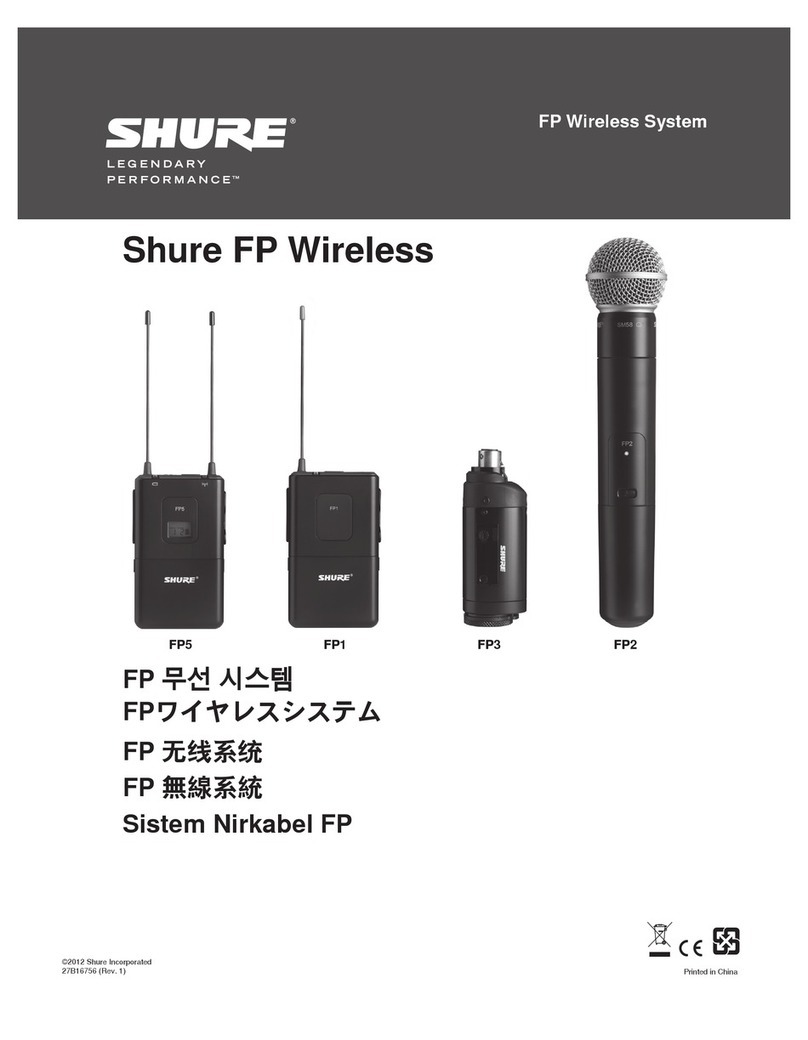
Shure
Shure FP5 manual
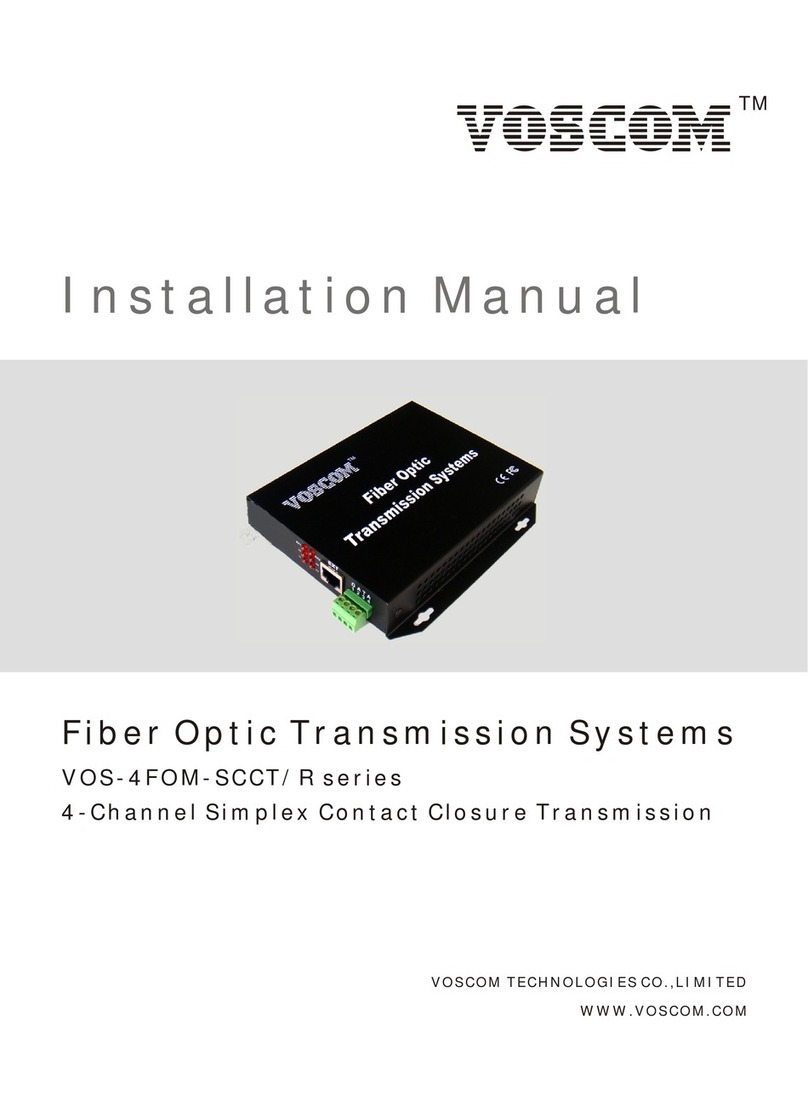
Voscom
Voscom VOS-4FOM-SCCT/R Series installation manual
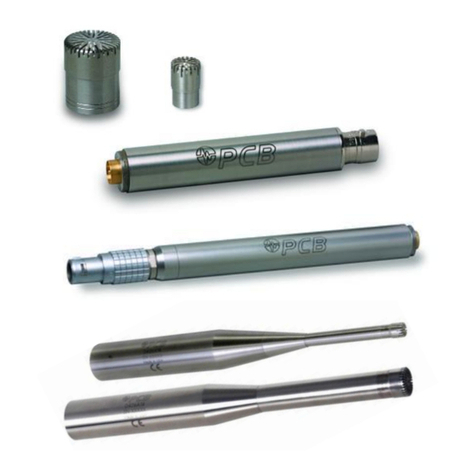
PCB Piezotronics
PCB Piezotronics 377 Series Installation and operating manual

PCB Piezotronics
PCB Piezotronics 377 Series Installation and operating manual
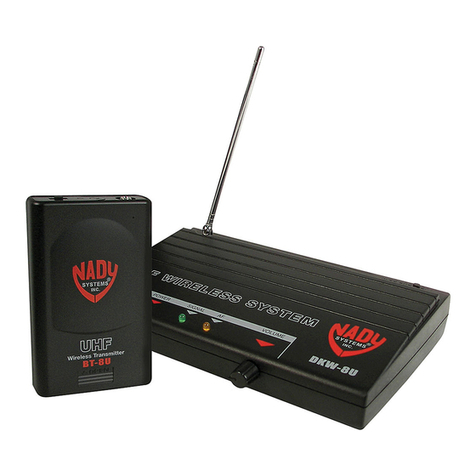
Nady Systems
Nady Systems DKW-8U owner's manual
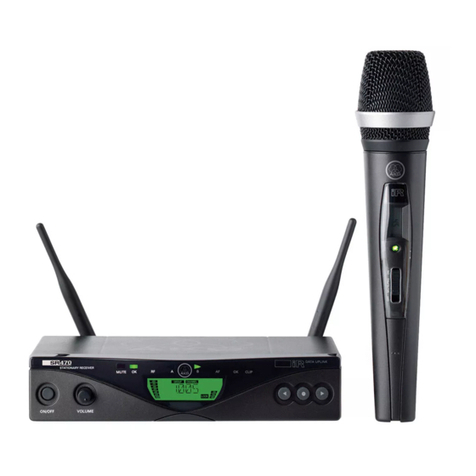
AKG
AKG WMS 470 - SERVICE User instructions
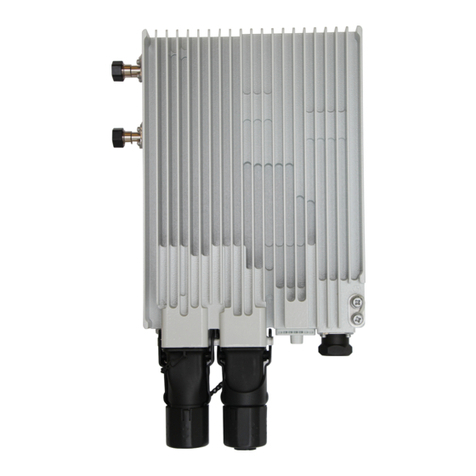
Huawei
Huawei OptiX RTN 320F Quick installation guide
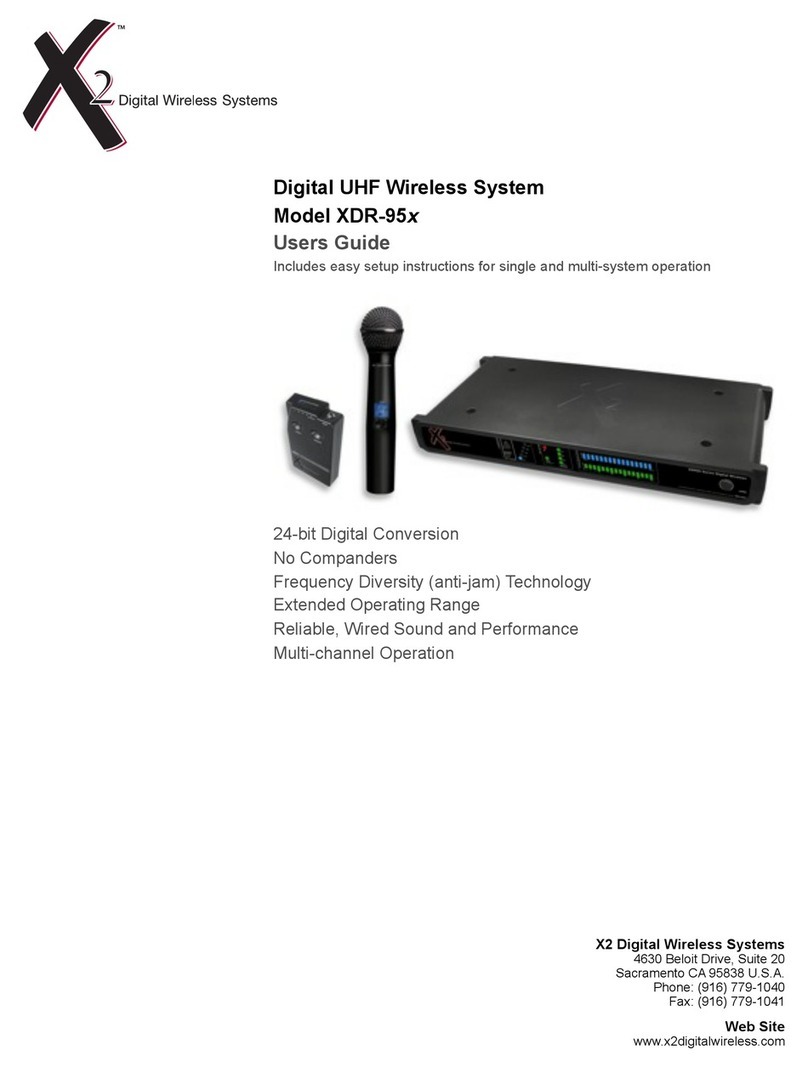
X2 Digital Wireless Systems
X2 Digital Wireless Systems XDR-95x user guide
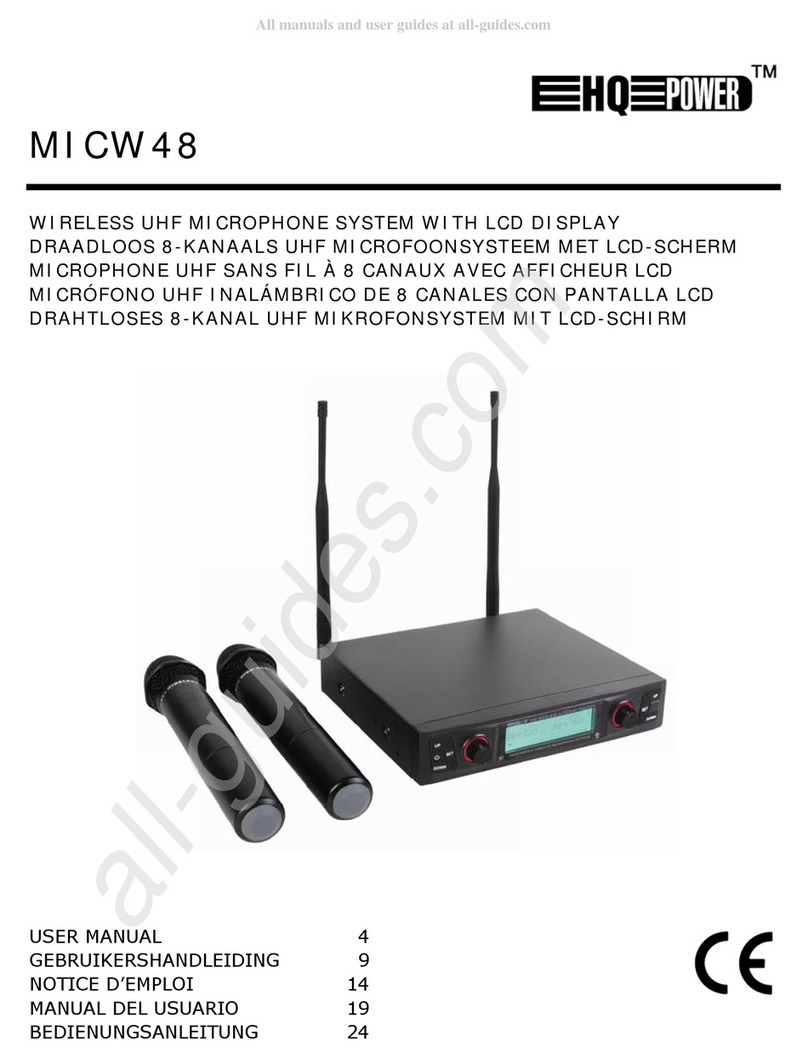
Velleman
Velleman HQ Power MICW48 user manual
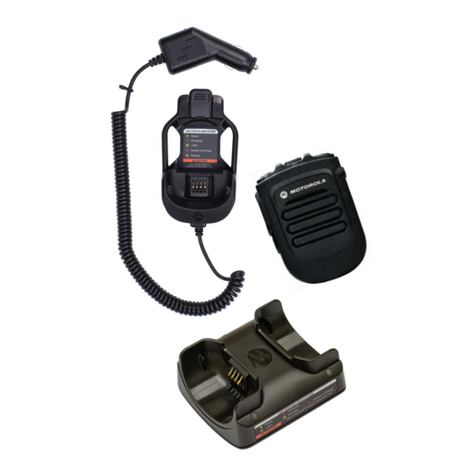
Motorola solutions
Motorola solutions PMMN4096 Series user guide
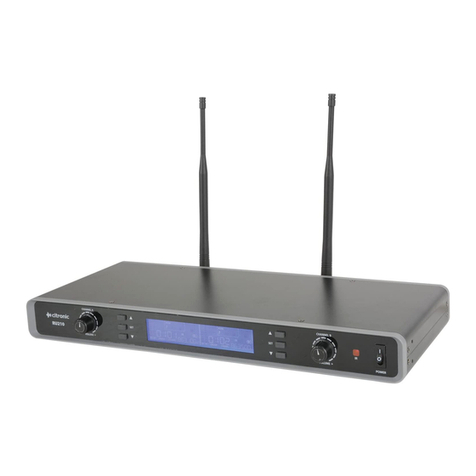
Citronic
Citronic 171.970UK user manual
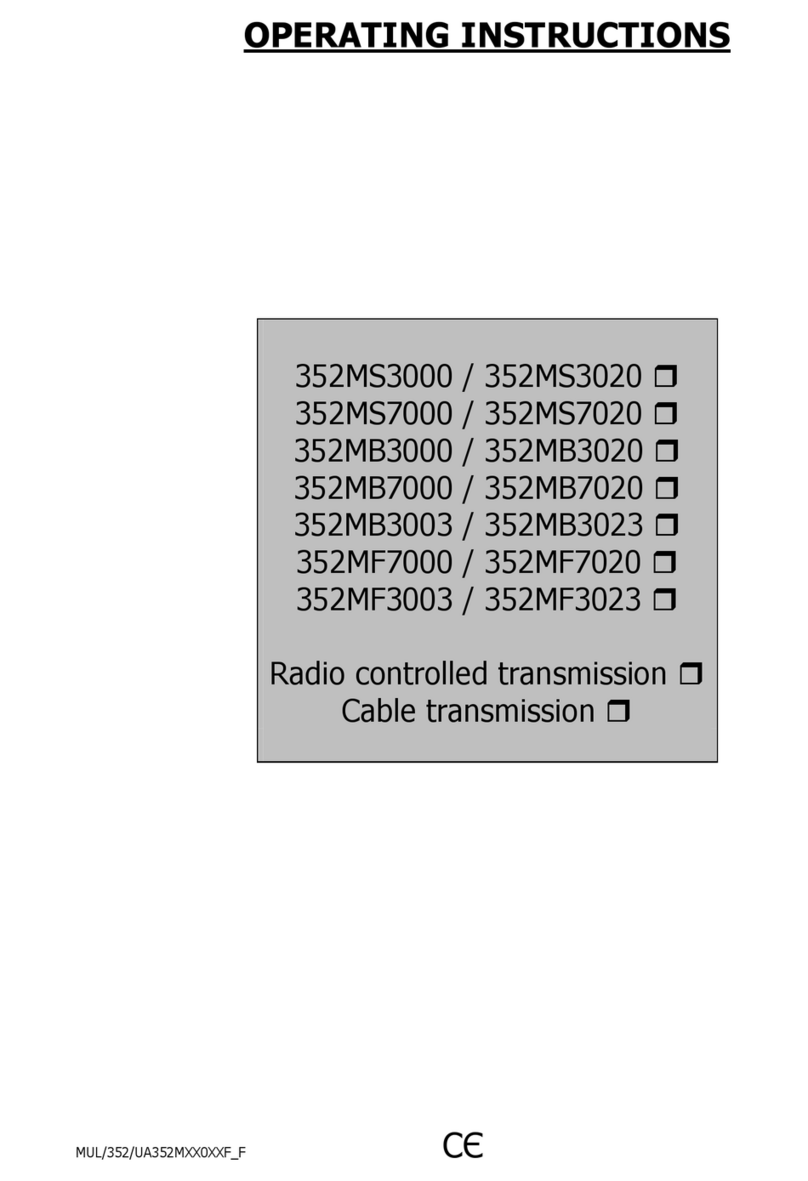
Stramatel
Stramatel 352MS3000 operating instructions
